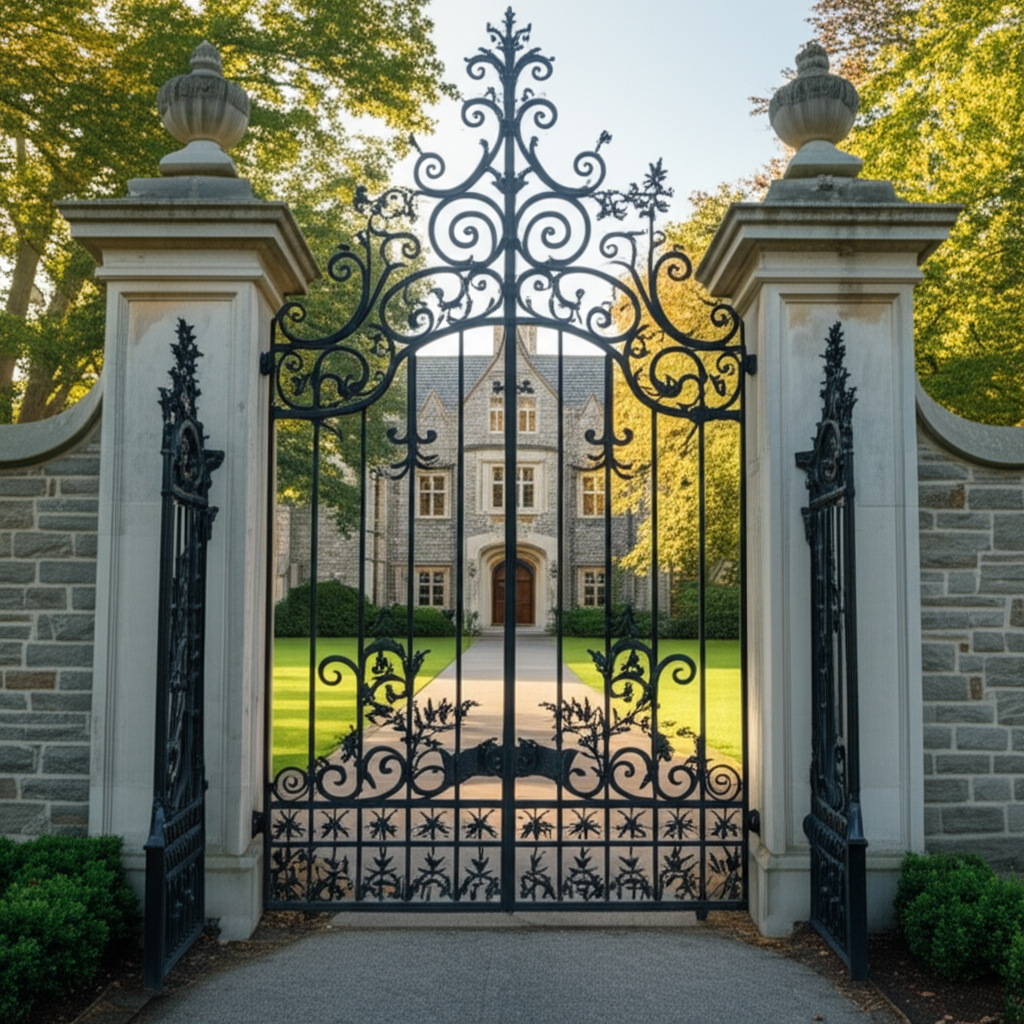What is the hardest private school to get into? While there’s no single “hardest,” top-tier boarding and day schools like Phillips Exeter Academy, Phillips Academy Andover, and St. Paul’s School are exceptionally selective, admitting only a tiny percentage of applicants. Admission often requires outstanding academics, extracurricular achievements, and strong character.
The world of elite private schools can seem like a maze, especially when you’re trying to figure out which ones are the most challenging to enter. Many parents and students wonder, “What is the hardest private school to get into?” This question often arises from a desire to aim for the highest academic environments or to understand the benchmarks of exceptional education. The reality is that “hardest” isn’t a simple label, but rather a reflection of extremely low acceptance rates and demanding admission criteria. These schools are not just about grades; they look for well-rounded individuals who will thrive in their rigorous academic and community settings. This guide will demystify the process, explore the schools often cited as the most selective, and explain what makes their admissions so competitive, helping you understand the landscape of elite private education.
Understanding Selectivity in Private Schools
When we talk about the “hardest” private school to get into, we’re primarily discussing selectivity. Selectivity is a measure of how difficult it is to gain admission. It’s typically gauged by the acceptance rate – the percentage of applicants who are offered a place. A lower acceptance rate generally indicates a higher level of competition and, therefore, a more selective school. However, selectivity is also influenced by the caliber of applicants and the school’s specific mission and values. Schools that are highly selective often have a large pool of highly qualified applicants, all vying for a limited number of spots.
Factors Contributing to High Selectivity
- Academic Excellence: These schools expect top grades, high scores on standardized tests (like the SSAT or ISEE, though many are test-optional), and a demonstrated love for learning.
- Extracurricular Prowess: Beyond academics, admissions committees look for students who excel in sports, arts, community service, leadership roles, and other meaningful activities.
- Character and Personal Qualities: Essays, recommendations, and interviews are crucial for assessing a student’s maturity, integrity, curiosity, and potential to contribute positively to the school community.
- Enrollment Capacity: Even highly qualified students may be denied if the school simply doesn’t have enough space. This is particularly true for boarding schools with limited dormitory capacity.
- Diversity and Fit: Schools aim to build a diverse student body, considering geographic, socioeconomic, racial, and interest-based diversity. They also look for students who are a good “fit” for their specific culture and educational philosophy.
The Elite Tier: Schools Consistently Cited for Extreme Selectivity

While there isn’t an official ranking of “hardest” schools, several institutions are consistently mentioned in discussions about highly selective private education. These schools often have acceptance rates in the single digits, sometimes even lower than 5%.
Phillips Exeter Academy (Exeter, New Hampshire)
Founded in 1781, Phillips Exeter Academy is one of the oldest and most prestigious coeducational boarding schools in the United States. Known for its rigorous Harkness teaching method, which emphasizes student-led discussions, Exeter attracts a global pool of applicants. Its commitment to fostering intellectual curiosity, community, and personal growth makes it a top choice for many, contributing to its exceptionally low acceptance rate.
The Harkness method, developed at Exeter, involves students and teachers sitting around a large oval table, fostering an environment where every student is encouraged to participate and share their ideas. This pedagogical approach demands a high level of engagement and critical thinking from its students.
Key Admission Highlights for Exeter:
- Low Acceptance Rate: Typically around 7-9%.
- Academic Rigor: Strong emphasis on challenging coursework and intellectual engagement.
- Harkness Method: Applicants are assessed on their potential to thrive in this discussion-based learning environment.
- Holistic Review: Admissions consider academic records, SSAT/ISEE scores (optional), essays, recommendations, interviews, and extracurricular involvement.
For more detailed information on their admissions process, you can visit the official Phillips Exeter Academy Admissions page.
Phillips Academy Andover (Andover, Massachusetts)
Founded in 1778, Phillips Academy Andover is another historic and highly regarded coeducational boarding and day school. Often mentioned in the same breath as Exeter, Andover shares a similar commitment to academic excellence and holistic development. Its extensive curriculum, diverse student body, and strong emphasis on character education make it a highly sought-after institution.
Andover offers a vast array of courses, from advanced placement (AP) classes to unique electives, alongside a robust arts program and extensive athletic offerings. The school also prides itself on its residential life and its commitment to preparing students for leadership and service.
Key Admission Highlights for Andover:
- Low Acceptance Rate: Usually between 7-9%.
- Comprehensive Curriculum: A wide range of academic and extracurricular opportunities.
- Community and Character: Emphasis on developing well-rounded individuals with strong ethical values.
- Admissions Process: Similar to Exeter, Andover uses a holistic review process, including academic achievements, standardized tests (optional), essays, interviews, and recommendations.
Prospective students can find detailed admission requirements on the Phillips Academy Andover Admissions & Aid website.
St. Paul’s School (Concord, New Hampshire)
Established in 1856, St. Paul’s School is a coeducational boarding school with a strong tradition of academic rigor and a focus on character development. It is known for its beautiful campus and its emphasis on creating a close-knit community. St. Paul’s offers a challenging academic program, extensive arts and athletics, and a commitment to fostering independent thought and responsibility among its students.
The school’s philosophy centers on the belief that education should cultivate the whole person – intellectually, spiritually, and physically. This comprehensive approach is reflected in its demanding curriculum and its immersive boarding environment.
Key Admission Highlights for St. Paul’s:
- Extremely Low Acceptance Rate: Often below 5%.
- Rigorous Academics: A challenging curriculum designed to push students to their academic limits.
- Residential Community: A strong focus on the boarding experience and the development of community bonds.
- Holistic Evaluation: Admissions consider academic performance, standardized test scores (optional), essays, recommendations, interviews, and evidence of character and leadership.
Information regarding their admission process can be found on the St. Paul’s School Admissions and Aid page.
Other Highly Selective Institutions
Beyond these often-cited examples, many other private schools boast incredibly low acceptance rates and demanding admission processes. These can include other well-known boarding schools and some of the top independent day schools in major metropolitan areas.
Notable Mentions:
- Hotchkiss School (Lakeville, Connecticut)
- Choate Rosemary Hall (Wallingford, Connecticut)
- Lawrenceville School (Lawrenceville, New Jersey)
- Deerfield Academy (Deerfield, Massachusetts)
- Groton School (Groton, Massachusetts)
- The Taft School (Watertown, Connecticut)
- Loomis Chaffee School (Windsor, Connecticut)
These schools, like Exeter, Andover, and St. Paul’s, all share a commitment to rigorous academics, strong community values, and a holistic approach to admissions. Their acceptance rates are typically in the low to mid-single digits, making them exceptionally competitive.
What Makes Admission So Difficult? A Deeper Look

The difficulty in gaining admission to these top-tier schools stems from a confluence of factors that create an intensely competitive environment. It’s not just about having perfect grades; it’s about demonstrating potential in multiple dimensions.
The Application Process: A Multi-Faceted Evaluation
Admissions committees at these selective schools conduct a thorough, holistic review of each applicant. This means they look at the applicant as a whole person, not just a collection of grades and scores.
Key Components of the Application:
- Academic Transcripts: A strong academic record, including grades, course rigor, and performance trends, is fundamental.
- Standardized Test Scores: While many schools are now test-optional, strong scores on tests like the Secondary School Admission Test (SSAT) or the Independent School Entrance Exam (ISEE) can still be a significant factor for those who submit them.
- Essays: Personal essays are critical for showcasing a student’s voice, personality, experiences, and ability to articulate their thoughts.
- Letters of Recommendation: Recommendations from teachers and counselors provide insights into a student’s academic abilities, character, and potential contributions to the school.
- Interviews: Interviews (often conducted on campus or virtually) allow admissions officers to get to know the student personally, assess their communication skills, and gauge their enthusiasm for the school.
- Extracurricular Activities: A demonstrated passion and commitment in areas like sports, arts, music, debate, community service, or leadership positions are highly valued.
- School Visit/Campus Tour: Experiencing the school environment firsthand can help applicants demonstrate genuine interest and fit.
The Competition: A Pool of Exceptional Candidates
The sheer volume of highly qualified applicants is a primary driver of low acceptance rates. Thousands of students, many with near-perfect grades and impressive extracurricular achievements, apply to these schools each year. This creates a situation where even the most talented candidates may not be offered a place.
Schools aim to build a diverse community, so they are not just looking for the “best” students in a singular sense. They are looking for students who will bring unique perspectives, talents, and experiences to the school, contributing to a vibrant and dynamic learning environment.
Beyond Academics: Character and Fit
Admissions committees are increasingly focused on a student’s character, resilience, curiosity, and ability to collaborate. They want to enroll students who will not only succeed academically but also contribute positively to the school’s culture and community.
The concept of “fit” is crucial. Does the student align with the school’s mission and values? Will they thrive in the school’s specific academic and social environment? This is assessed through essays, interviews, and recommendations.
Preparing Your Application for Highly Selective Schools
Gaining admission to a highly selective private school requires strategic preparation and a deep understanding of what these institutions are looking for. It’s a marathon, not a sprint, and begins long before the application deadline.
Academic Preparation
- Strive for Excellence: Focus on achieving the best possible grades in challenging courses, including honors and advanced placement classes if available.
- Develop Strong Study Habits: Cultivate effective time management, critical thinking, and problem-solving skills.
- Consider Standardized Tests: If you choose to take them, prepare thoroughly for the SSAT or ISEE. Many schools are test-optional, but strong scores can still bolster an application.
Extracurricular Engagement
- Pursue Passions Deeply: It’s more impactful to be deeply involved and excel in a few activities rather than having superficial involvement in many.
- Seek Leadership Opportunities: Take on leadership roles in clubs, sports teams, or community projects.
- Demonstrate Commitment: Show sustained involvement and growth in your chosen activities over several years.
Crafting a Compelling Application
- Authentic Essays: Write personal essays that genuinely reflect your voice, experiences, and insights. Show, don’t just tell.
- Thoughtful Recommendations: Ask teachers who know you well academically and personally for recommendations. Provide them with information about your aspirations and the schools you’re applying to.
- Prepare for Interviews: Research the school thoroughly and practice answering common interview questions. Be ready to discuss your interests, aspirations, and why you want to attend that specific school.
- Understand the School’s Mission: Tailor your application materials to demonstrate how you align with the school’s specific values, philosophy, and community.
A Comparison of Admission Rates: Illustrative Data
To illustrate the competitive nature of these schools, consider this simplified table of illustrative acceptance rates. Please note that actual rates can fluctuate yearly and are often not publicly disclosed in precise detail for all schools. These figures are based on general reporting and aim to provide a comparative understanding.
| School Name | Typical Acceptance Rate (Approximate) | Focus |
|---|---|---|
| Phillips Exeter Academy | 7-9% | Academic Rigor, Harkness Method, Global Community |
| Phillips Academy Andover | 7-9% | Comprehensive Curriculum, Arts, Athletics, Character |
| St. Paul’s School | < 5% | Holistic Development, Strong Community, Residential Life |
| Hotchkiss School | 10-12% | Rigorous Academics, Arts, Athletics, Global Citizenship |
| Choate Rosemary Hall | 10-12% | Innovation, Diverse Programs, Student-Centered Learning |
This table highlights how exceptionally difficult it is to gain admission to these institutions. Even a difference of a few percentage points can represent hundreds of qualified applicants who are not offered a place.
Frequently Asked Questions (FAQ)
Here are some common questions aspiring students and their families have about the hardest private schools to get into.
Q1: What does “test-optional” really mean for admissions?
A1: “Test-optional” means that submitting standardized test scores (like SSAT or ISEE) is no longer a mandatory part of the application. If you feel your scores accurately reflect your abilities, you can submit them. If you believe your scores do not represent your strengths, or if you didn’t take the tests, you can still apply and be considered based on other parts of your application. However, for highly selective schools, a strong academic record and other application components become even more critical if tests are not submitted.
Q2: Is it better to have perfect grades or strong extracurriculars?
A2: Highly selective schools look for a balance. While excellent grades are essential, they also value students who are passionate, committed, and have made a meaningful impact in their extracurricular pursuits. It’s often more impressive to show deep engagement and leadership in a few areas than a superficial involvement in many. The key is to demonstrate a genuine passion and growth.
Q3: How important are essays in the application process?
A3: Essays are critically important. They are your primary opportunity to let your personality, voice, and unique perspective shine through. Admissions committees use essays to understand who you are beyond your grades and test scores, to assess your writing ability, and to gauge your thoughtfulness and self-awareness. Authenticity and clarity are key.
Q4: Can I get into a top private school without attending a prestigious middle school?
A4: Yes, absolutely. While a strong academic background from any school is beneficial, admissions committees evaluate applicants based on their individual performance and potential. They understand that opportunities vary. What matters most is how you have performed in the academic environment you were in and how you can demonstrate your readiness for the rigor of their school.
Q5: What is the Harkness method, and why is it important for Exeter?
A5: The Harkness method is an educational approach where students and teachers gather around a large oval table to engage in discussions. It encourages active participation, critical thinking, and collaborative learning, with students taking more ownership of their education. For Exeter, success in this method is a key factor, so applicants are assessed on their potential to thrive in such an environment.
Q6: How do I know if I’m a good “fit” for a particular school?
A6: “Fit” refers to how well your personality, learning style, interests, and values align with the school’s culture, mission, and community. You can gauge fit by thoroughly researching the school’s website, reading about its philosophy, visiting the campus (if possible), and talking to current students or alumni. Your essays and interview responses should also reflect this understanding.
Q7: Are there any ways to improve my chances if my grades aren’t perfect?
A7: Yes. Focus on demonstrating significant improvement over time, excelling in your most challenging courses, and highlighting strong performance in your extracurricular activities. Your essays and letters of recommendation can also provide context for any academic challenges and showcase your resilience, effort, and passion for learning.
Conclusion: Aiming High, Preparing Smart
The question, “What is the hardest private school to get into?” leads us to a landscape of exceptionally selective institutions like Phillips Exeter Academy, Phillips Academy Andover, and St. Paul’s School, among others. These schools are renowned for their rigorous academic standards, comprehensive programs, and commitment to developing well-rounded individuals. Their extremely low acceptance rates are a testament to the intense competition and the high caliber of applicants they attract.
Gaining admission requires more than just strong grades; it demands a holistic approach that includes stellar academic performance, deep engagement in extracurricular activities, compelling essays, strong recommendations, and demonstrated character. Prospective students must understand that these schools seek not only academic achievement but also individuals who will contribute positively to their vibrant communities and thrive in their unique educational environments. By focusing on deep learning, pursuing passions with dedication, and crafting an authentic and well-prepared application, students can significantly enhance their chances of success in navigating the challenging admissions process of these elite private schools.

